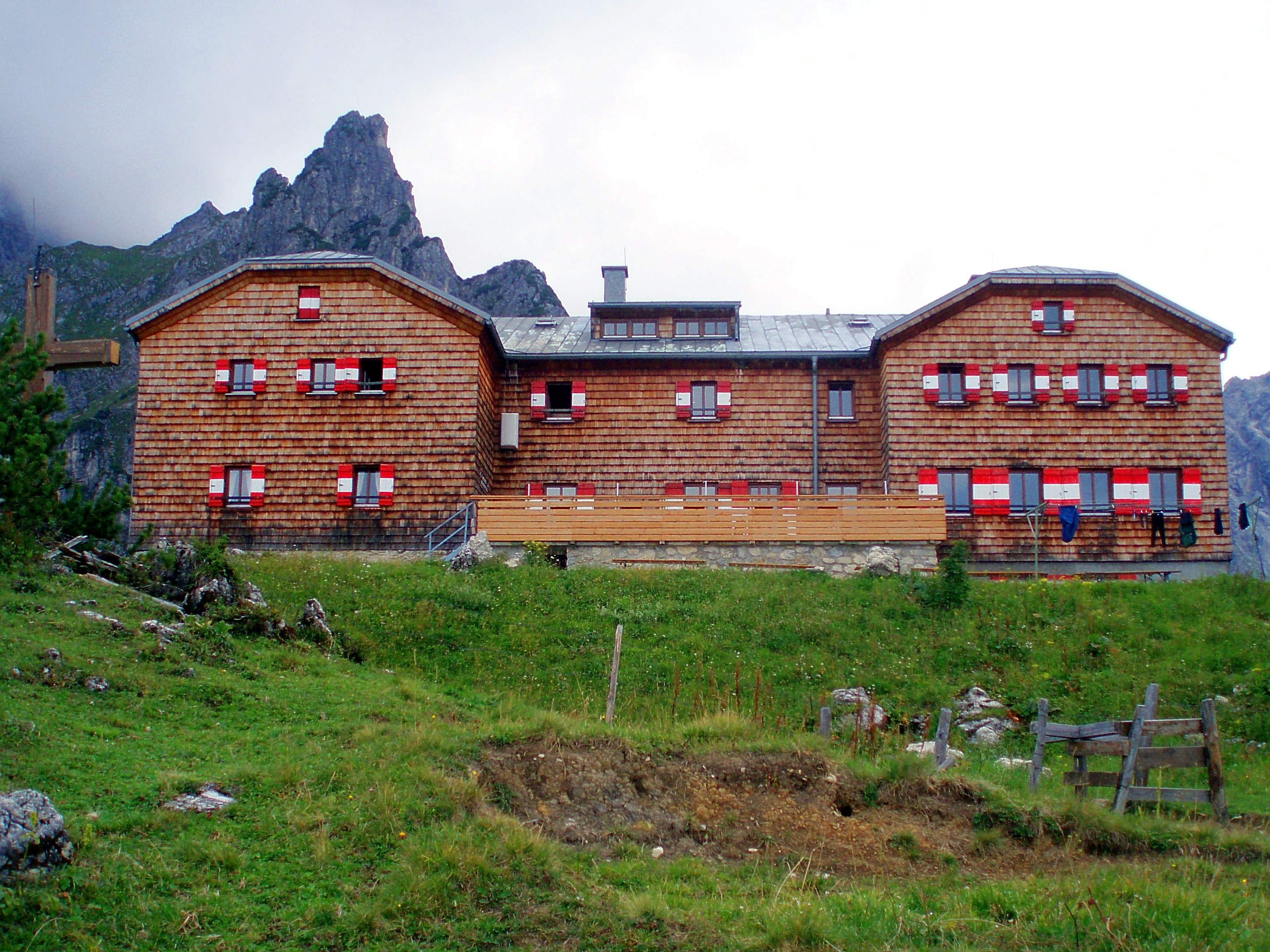Große Bischofsmütze on:
[Wikipedia]
[Google]
[Amazon]
The Große Bischofsmütze (
(in German) Retrieved 13/06/2020.
 The summit of the Große Bischofsmütze can only be accessed through
The summit of the Große Bischofsmütze can only be accessed through
File:West view of Bischofsmütze (2009).jpg, View from the west
File:Bischofsmutze E.jpg, View from the east
File:Bischofsmütze 1247 11-09-11.JPG, More detailed view from the south
German
German(s) may refer to:
* Germany, the country of the Germans and German things
**Germania (Roman era)
* Germans, citizens of Germany, people of German ancestry, or native speakers of the German language
** For citizenship in Germany, see also Ge ...
: "great bishop's mitre") is the highest peak in the Gosaukamm range of the Dachstein Mountains
The Dachstein Mountains () are a mountain range in the Northern Limestone Alps.
The term is used by the Austrian Alpine Club in its classification of the Eastern Alps as one of the 24 sub-ranges of the Northern Limestone Alps (AVE No. 14).
The ...
, Austria
Austria, formally the Republic of Austria, is a landlocked country in Central Europe, lying in the Eastern Alps. It is a federation of nine Federal states of Austria, states, of which the capital Vienna is the List of largest cities in Aust ...
.
Together with the Kleine Bischofsmütze (), the Große Bischofsmütze () forms a distinctive twin-peak, with the two summits separated by the ''Mützenschlucht'' ravine''.'' The mountain is in the state of Salzburg
Salzburg is the List of cities and towns in Austria, fourth-largest city in Austria. In 2020 its population was 156,852. The city lies on the Salzach, Salzach River, near the border with Germany and at the foot of the Austrian Alps, Alps moun ...
, near the border with Upper Austria
Upper Austria ( ; ; ) is one of the nine States of Austria, states of Austria. Its capital is Linz. Upper Austria borders Germany and the Czech Republic, as well as the other Austrian states of Lower Austria, Styria, and Salzburg (state), Salzbur ...
, and forms part of the larger Northern Limestone Alps
The Northern Limestone Alps (), also called the Northern Calcareous Alps, are the ranges of the Eastern Alps north of the Central Eastern Alps located in Austria and the adjacent Bavarian lands of southeastern Germany. The distinction from the ...
.
History
The name of the mountain can be attributed to its characteristic shape, that resembles a bishop'smitre
The mitre (Commonwealth English) or miter (American English; American and British English spelling differences#-re, -er, see spelling differences; both pronounced ; ) is a type of headgear now known as the traditional, ceremonial headdress of ...
("Bischofsmütze"). The mountain has also been referred to historically as ''Gosauer Stein'' ("Stone of Gosau") due to its location overlooking the town of Gosau
Gosau is a municipality in the district of Gmunden in Upper Austria, Austria.
Location
Gosau is situated along the Gosaubach stream in the Salzkammergut region. The center of the town is at an elevation of . 58.9% of the municipality is foreste ...
.
The Große Bischofsmütze was first ascended on June 28, 1879 by Johann Anhäusler and Johann Steiner.
Two major rockfalls occurred in 1993 that displaced of rock into the valley below, altering the mountain's visual profile.Bischofsmütze bröckelt''(in German) Retrieved 13/06/2020.
Geology
The upper parts of the mountain are composed of Dachstein limestone whilst the base is composed of dolomite. The rocks date from theUpper Triassic
The Late Triassic is the third and final epoch of the Triassic Period in the geologic time scale, spanning the time between Ma and Ma (million years ago). It is preceded by the Middle Triassic Epoch and followed by the Early Jurassic Epoch. T ...
period.
Climbing
 The summit of the Große Bischofsmütze can only be accessed through
The summit of the Große Bischofsmütze can only be accessed through rock climbing
Rock climbing is a climbing sports discipline that involves ascending climbing routes, routes consisting of natural rock in an outdoor environment, or on artificial resin climbing walls in a mostly indoor environment. Routes are documented in c ...
. The "Normal route" has an approach from the south passing through the ''Mützenschlucht'', and on the UIAA climbing scale is graded III. The route is polished, and also commonly used for descent. Some abseil
Abseiling ( ; ), also known as rappelling ( ; ), is the controlled descent of a steep slope, such as a rock face, by moving down a rope. When abseiling, the person descending controls their own movement down a static or fixed rope, in cont ...
points are present. The Alpine club hut ' that is directly south of the mountain is a base for many ascents. With a history of rockfalls and a particular fragile eastern side, the mountain is currently monitored to identify changes to its internal structure and assess risk of rock collapse.
Gallery
See also
*Double summit
Double, The Double or Dubble may refer to:
Mathematics and computing
* Multiplication by 2
* Double precision, a floating-point representation of numbers that is typically 64 bits in length
* A double number of the form x+yj, where j^2=+1
* A ...
* Gosaukamm
References
External links
{{Commons category-inline Dachstein Mountains Mountains of Austria